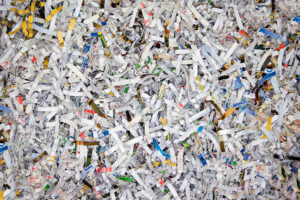In the fast-paced and meticulous world of healthcare, safety is a term that finds its application in various forms. One pivotal aspect that requires unwavering attention is the management of sharp medical objects. From used syringes and needles to broken glass and blades, these objects pose a significant threat if not handled appropriately. This is where the right choice of a sharps container becomes an essential aspect for healthcare providers.
Sharps Container: A Brief Introduction
A sharps container is a rigid, puncture-resistant container designed specifically for the disposal of sharp medical items. The importance of these containers cannot be overstated—they act as the primary barrier between sharp medical waste and the external environment, preventing potential injuries and disease transmissions.
Why Choosing the Right Sharps Container is Imperative:
- Safety First: The primary objective of a sharps container is to ensure the safe containment and disposal of sharp items. The right container will be leak-proof and puncture-resistant, ensuring that dangerous objects are safely locked away.
- Compliance Matters: Regulations dictate specific standards for sharps containers, such as the OSHA’s Bloodborne Pathogens Standard. Using a compliant sharps container is not just about following the law; it’s about ensuring the highest safety standards.
- Efficiency and Capacity: Different healthcare settings produce varying amounts of sharp waste. Choosing the right size and type of sharps container can streamline waste management, preventing overflow and reducing the frequency of disposals.
- Environmental Concerns: Modern sharps containers are designed with sustainability in mind. By selecting eco-friendly models, healthcare providers can ensure safety while minimizing their environmental footprint.
- User-friendly Design: A well-designed sharps container will be easy to use and intuitive, ensuring that all healthcare staff can safely dispose of sharps without any complications.
Factors to Consider When Choosing a Sharps Container:
- Type of Healthcare Setting: A large hospital might have different requirements compared to a small clinic or a research lab. Understand your needs and choose accordingly.
- Volume of Waste: Estimate the amount of sharp waste generated and select a container size that suits your needs.
- Accessibility: Ensure that the sharps container is easily accessible to the staff, but safely out of reach of unauthorized individuals, especially children.
- Visibility and Labels: A clear label, often mandated by regulations, ensures that everyone knows the container’s purpose. Some models also offer a transparent or semi-transparent body, allowing for visual monitoring of fill levels.
- Disposal Mechanisms: Some sharps containers can be reused after proper sterilization, while others are for single use. Consider the disposal mechanisms in your facility when making a choice.
In Conclusion:
The intricate world of healthcare thrives on precision and safety. When it comes to managing sharp medical waste, the role of a sharps container becomes crucial. By investing time and thought into selecting the right container, healthcare providers not only uphold the highest safety standards but also fortify the trust patients place in them.
Looking for a comprehensive range of sharps containers tailored to your needs? Connect with us to explore the best solutions that prioritize both safety and sustainability.










